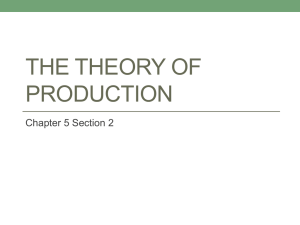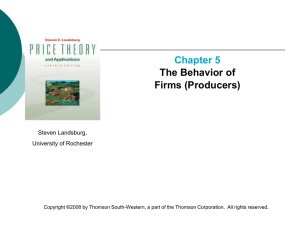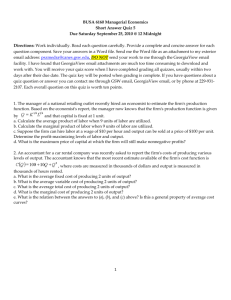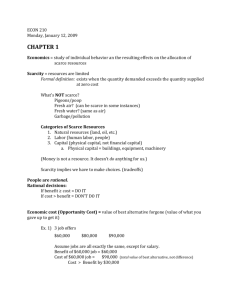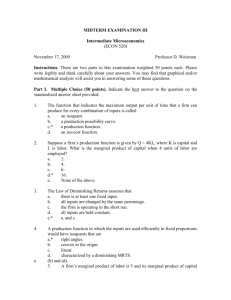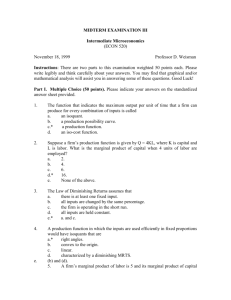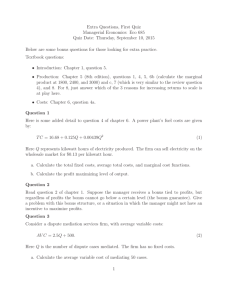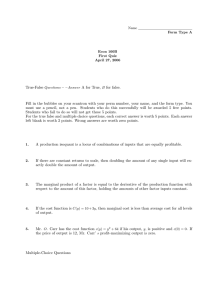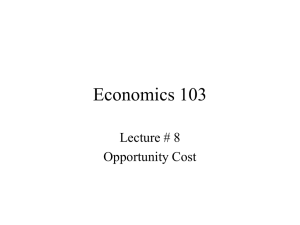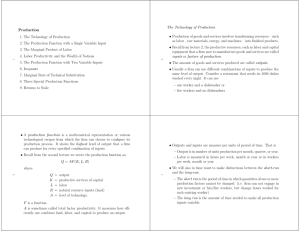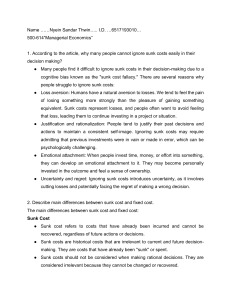Overview: Production and Cost I • Production Processes
advertisement
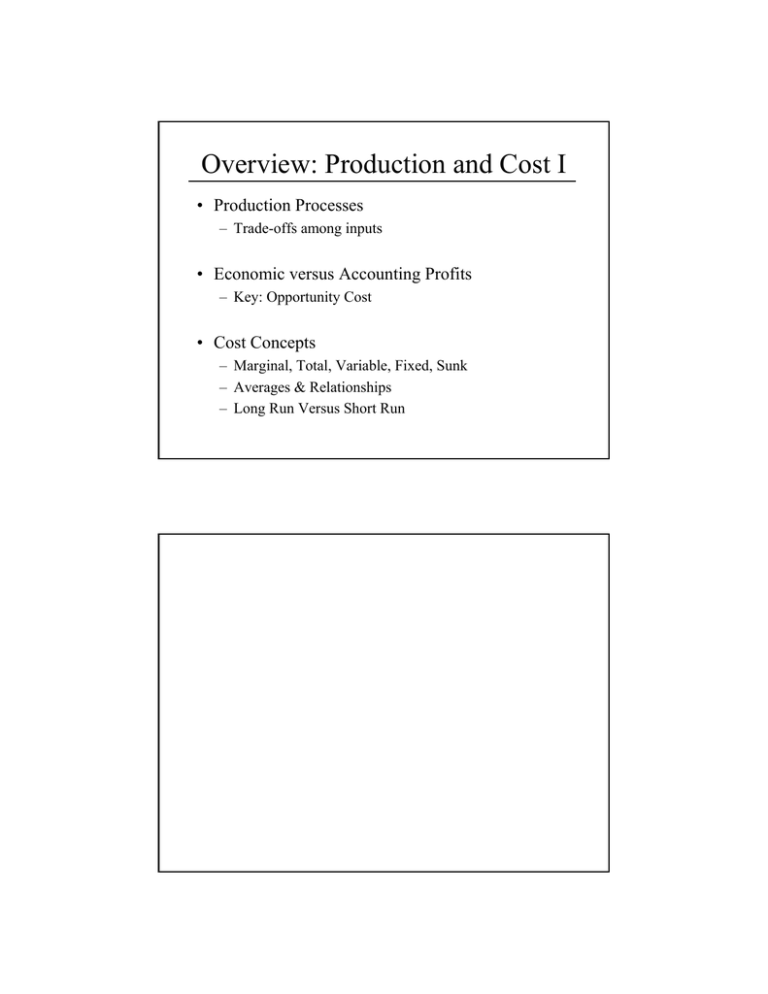
Overview: Production and Cost I • Production Processes – Trade-offs among inputs • Economic versus Accounting Profits – Key: Opportunity Cost • Cost Concepts – Marginal, Total, Variable, Fixed, Sunk – Averages & Relationships – Long Run Versus Short Run Production • What are some examples of production processes? • Production function: Q=f(K,L) Represents technology to transform inputs into an output. • Trade-offs in Inputs - Isoquants • Why would we care? Profits • Definition: Profits = Revenues – Costs • Okay, what are Revenues and Costs? • Accountants versus Economists Accounting Depreciation • Rules for “writing off” capital expenses K Z I straight line Capital “value” Life “Depreciation” Life • Other methods • Issue: appropriate values reflected? • Divergent results Opportunity Cost • Definition: – Highest value that could be received for an input – ‘Best alternative use’ is comparison • Examples • Why important? Types of Cost • Variable cost (VC) • Fixed cost (FC) • Total cost TC = VC + FC • Average Cost (AC) • Marginal Cost (MC) Solutions 4 U • Purpose: Provide business solutions for small and medium size businesses • Business Model – 5 Partners – One week engagements – Each engagement staffed with 1 Partner and 1 Analyst • “Production Capacity”: 5 cases per week for 48 weeks per year = 240 cases/year Solutions 4 U: Costs Partner salaries Analyst salaries Rent Staff TV Ads Office Eqmt Research Tools Weekly Per Individual Total $ 3,750 $ 18,750 $ 1,000 $ 5,000 Market Research, Website Design, Billboard and Brochures $ 2,500 $ 500 $ 1,250 Annual $ 900,000 $ 240,000 $ 50,000 $ 120,000 $ 24,000 $ 36,000 $ 60,000 Other $ 150,000 Variable Cost • Definition: – Costs that vary with the level of output • Examples Fixed Cost and Sunk Cost • Definition: Fixed Cost – Costs that do not vary with the level of output – Recoverable if firm is shut down • Definition: Sunk Cost – Costs that cannot be recovered – Zero opportunity cost • Examples Marginal Cost • Definition: – The incremental cost of producing an additional unit of output • Examples • Why important? Solutions 4 U: Costs and Business Decisions What are the relevant costs: • Start-up decision? • Continue operating after – 6 months? – One year? • If a company wanted you to add them to your already-full schedule? Important Distinctions • Marginal Costs are key to production decisions • Marginal Costs typically differ from Average Costs • Average Cost is just a convenient way to look at Total Cost. • Sunk Cost matters in that it shouldn't matter. Relationships Among Cost Concepts • Relationship between MC and AC – MC > AC implies AC increasing – MC < AC implies AC decreasing • Why is it important to know this? Long Run and Short Run • Issue is flexibility – ‘Long Run’ - all inputs variable, including plant (capacity), as well as possible technologies. – ‘Short Run” – some inputs fixed, typically plant (capacity), and production technology fixed. • Why important? Take Away Points • Understanding cost types and cost structure helps you to see the true profitability of a product or client (economic versus accounting profit). • Key pitfalls – Ignoring opportunity costs – Considering sunk costs – Not distinguishing between MC and AC (optimal level vs. shutdown) • Cost structure is also important for strategic issues, such as competitive dynamics and entry barriers.

